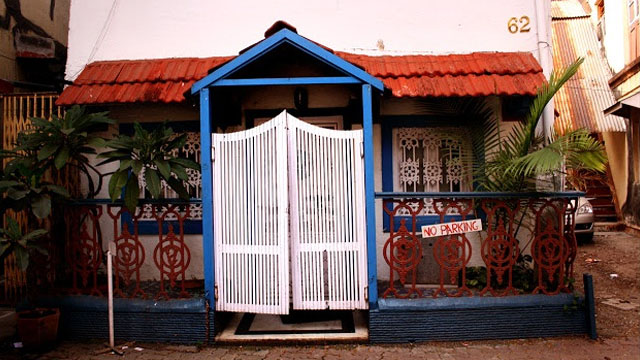A trip to the 19th century heritage village of Khotachiwadi in Mumbai will engulf you in the Old Word charm of Portuguese-style architecture and a cultural potpourri.
Traversing the busy lanes of Girgaun in the heart of the city, I took a slight detour to one of the narrow gullies, not knowing where it leads to and I was in for a very pleasant surprise. What unfolded before my eyes was something unlike Mumbai – far away from the reaches of a metropolis and deep rooted in the thick of it. Khotachiwadi is a heritage village in south Mumbai, around which the city has grown to its present magnificence. Though it appears to be a misfit to the cosmopolitan countenance of the megalopolis, it is a testimony to the generous ability of Mumbai to give its people the liberty to choose and shape their own place and environment.

This 19th century settlement was founded by Mr. Khot, after whom it is named, who was the landlord who leased these plots to the early settlers in the area. It was first inhabited by the city’s east-Indian Christians who are believed to have worked for the East India Company and hence got the name. Most of these people had a mix of Indian and Portuguese origins, as a result of which, Khotachiwadi looks like a forgotten piece of Portugal with its quaint old houses, trellised balconies and latticed windows. In the recent past, many Gujarati and Marwari families have also moved into the area.It’s a labyrinth of small narrow lanes wandering off the main road into the belly of the city.

Once you enter it feels like a different world – so much away from the hustle and bustle of fast-paced city life and completely not invaded by traffic, which seems a utopian wish in a city like Mumbai. The houses are made of wood, with a large open front verandah, a back courtyard and an external staircase to access the top bedroom. Earlier, there used to be 65 of these houses and the number has now reduced to only 28, as old buildings are being pulled down to make way for new skyscrapers to accommodate the ever swelling population of the city.

Particularly, the charming architecture of the village has won the attention of many urban heritage conservation initiatives. Most of the people are attracted to its distinctive low-rise, high-density landscape showcasing a variety of individual homes, chawls and apartment buildings in bright colours that reveal Indo-Portuguese flourishes, port-town styles off the western coast and modernist decor touches. But it is indeed limited to talk of the place only in terms of its architectural and historical uniqueness. It is also the intimate involvement of the residents in times of emergencies that makes the place so special.
As of the residents, Shirley, puts it firmly that “I have been living here for the past 40 years and what keeps me attached to this place is the generosity and warmheartedness of the people. In times of need, we are there for each other.” There every house has an engaging tale to tell of its existence and of the generations of families who have lived in this neighborhood The community is passionately involved in its present and future as for them the place is stretched between communitarian nostalgia and the aspirations of its younger generations.

One has to run through the history lessons of the city in order to understand the significance and the status Khotachiwadi holds within the metropolis of Mumbai. The area comprises most of the layers of social and cultural changes that have transformed the face of the city through the last five centuries. It’s lanes, family names, architectural forms, social, cultural and culinary traditions continue to perpetuate the customs and habits from days that have long gone. Tracing the history of the place and of its people requires approaching it from different perspectives. It’s like catching a glimpse of the evolution of an incrementally built city, generation after generation.






